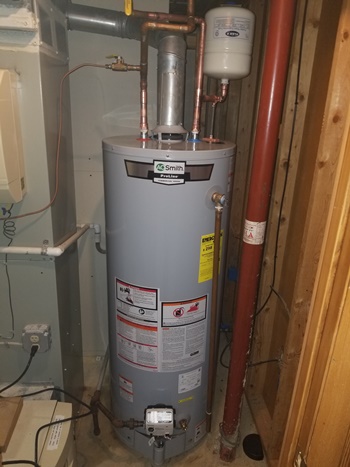Simple Steps to Caring for Your Home's Hot Water System
Simple Steps to Caring for Your Home's Hot Water System
Blog Article
They are making several good points relating to Water Heater Maintenance Tips You Can't Afford to Forget in general in this article which follows.

Warm water is important for everyday comfort, whether it's for a revitalizing shower or washing dishes. To ensure your hot water system runs efficiently and lasts longer, routine maintenance is essential. This article gives functional suggestions and insights on just how to preserve your home's hot water system to stay clear of interruptions and costly fixings.
Intro
Maintaining your home's warm water system might seem daunting, yet with a couple of simple actions, you can ensure it runs smoothly for many years to come. This overview covers everything from recognizing your hot water system to do it yourself maintenance tips and recognizing when to contact specialist assistance.
Relevance of Maintaining Your Hot Water System
Regular upkeep not just prolongs the life-span of your hot water system yet also ensures it operates successfully. Overlooking upkeep can lead to reduced performance, greater energy costs, and even early failure of the system.
Indications Your Warm Water System Needs Upkeep
Knowing when your warm water system needs focus can prevent major problems. Keep an eye out for indications such as irregular water temperature level, odd sounds from the heater, or rustic water.
Recognizing Your Warm Water System
Before diving into upkeep tasks, it's practical to recognize the basic elements of your warm water system. Generally, this consists of the water heater itself, pipes, anode poles, and temperature level controls.
Regular Monthly Upkeep Tasks
Routine month-to-month checks can assist catch small problems prior to they rise.
Purging the Water Heater
Flushing your hot water heater gets rid of debris build-up, enhancing performance and prolonging its life.
Checking and Replacing Anode Rods
Anode rods prevent corrosion inside the storage tank. Evaluating and changing them when worn out is important.
Checking and Readjusting Temperature Settings
Changing the temperature settings guarantees optimal performance and safety and security.
Do It Yourself Tips for Upkeep
You can execute several upkeep jobs on your own to maintain your hot water system in top condition.
Checking for Leaks
On a regular basis evaluate pipelines and links for leaks, as these can result in water damage and higher costs.
Testing Stress Alleviation Valves
Evaluating the pressure relief valve ensures it functions correctly and prevents too much stress buildup.
Insulating Pipes
Insulating warm water pipelines decreases warm loss and can save power.
When to Call a Professional
While do it yourself upkeep is useful, some problems require professional know-how.
Complicated Issues Calling For Expert Help
Examples consist of significant leaks, electric issues, or if your water heater is consistently underperforming.
Regular Professional Upkeep Benefits
Specialist maintenance can consist of complete assessments, tune-ups, and ensuring conformity with security requirements.
Conclusion
Routine maintenance of your home's warm water system is vital for efficiency, long life, and cost savings. By adhering to these suggestions and knowing when to seek specialist assistance, you can ensure a trusted supply of warm water without unforeseen disruptions.
How to Maintain an Instant Hot Water Heater
Before tinkering with your hot water heater, make sure that it’s not powered on. You also have to turn off the main circuit breaker and shut off the main gas line to prevent accidents. Also turn off the water valves connected to your unit to prevent water from flowing into and out of the appliance. 2. When you’re done, you have to detach the purge valves’ caps. These look like the letter “T†and are situated on either side of the water valves. Doing so will release any pressure that has accumulated inside the valves while at the same time avoid hot water from shooting out and burning your skin. 3. When the purge valves’ caps are removed, you have to connect your hosing lines to the valves. Your unit should have come with three hoses but if it didn’t, you can purchase these things from any hardware or home repair shops. You can also get them from retail stores that sell water heating systems. Read the user’s manual and follow it to complete this task properly. When the hosing lines are connected, open the purge port’s valves. 4. You should never use harsh chemical cleaners or solutions when cleaning your unit. Make use of white vinegar instead. It should be undiluted and you’ll probably use about 2 gallons. 5. Now flush your water heater. This task should probably take about 40 minutes. We can’t give you specific directions for this because the procedure is carried out depending on the type, model and brand of your heater. With that being said, refer to the user’s manual. 6. When you’re done draining the unit, you have to turn off the purge port valves again. Remove the hosing lines that you earlier installed on each of the water valves. Put the valve caps (purge port) back in their respective places and be very careful so as not to damage the rubber discs that are found inside these caps. 7. Now that everything’s back in place, check your user’s manual again to find out how to reactivate your water heating system. 8. Once it is working, turn one of your hot water faucets on just to let air pass through the heater’s water supply pipes. Leave the tap on until water flows smoothly out of it. https://www.orrplumbing.com/blog/2014/september/how-to-maintain-an-instant-hot-water-heater/

As a passionate reader about Tips For Maintaining Your Hot Water Heater, I think sharing that excerpt was worth the trouble. Loved our write-up? Please quickly share it. Let somebody else find it. Thanks for taking the time to read it.
Call Today Report this page